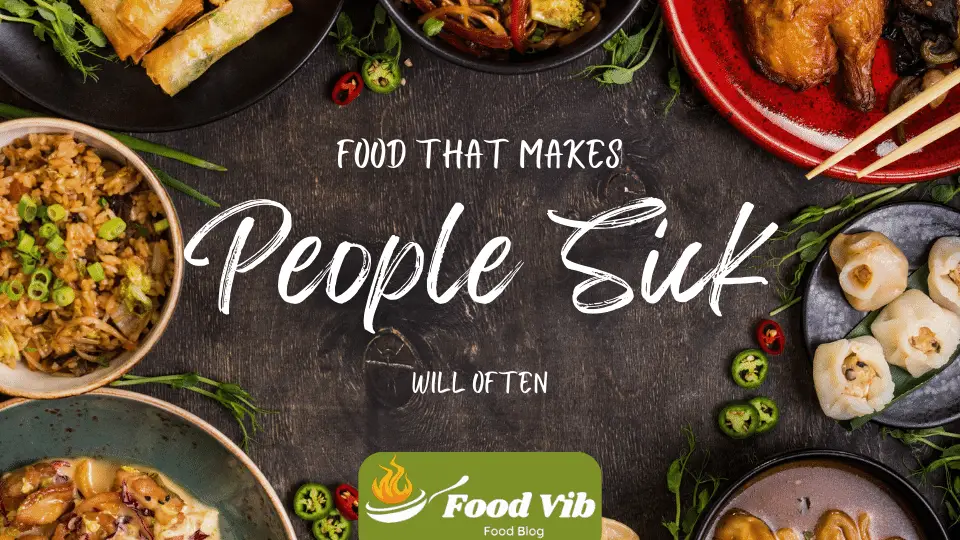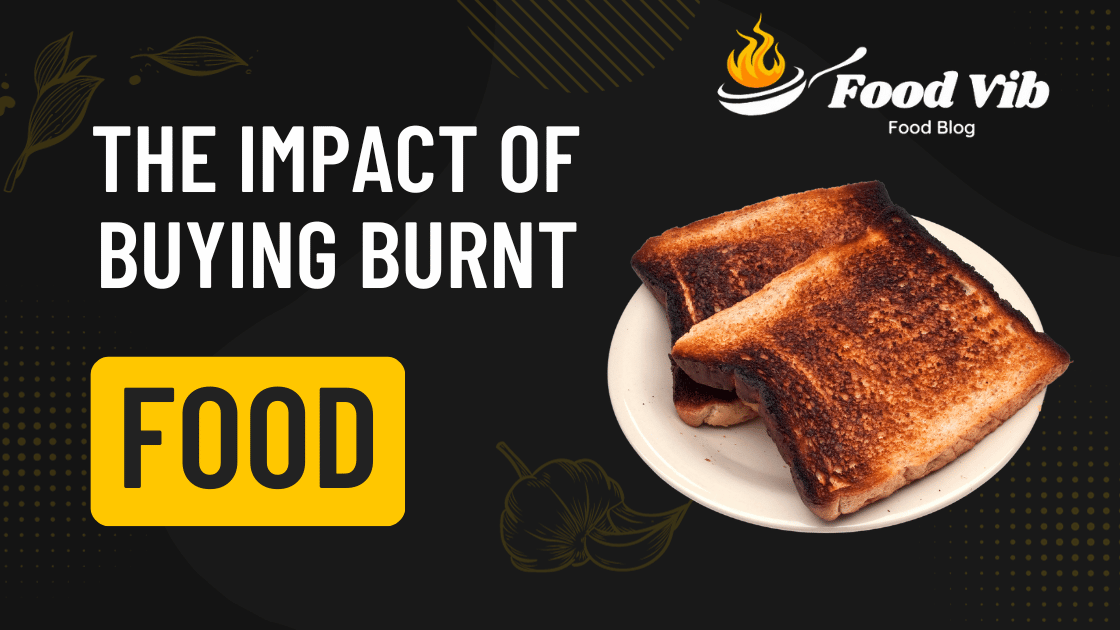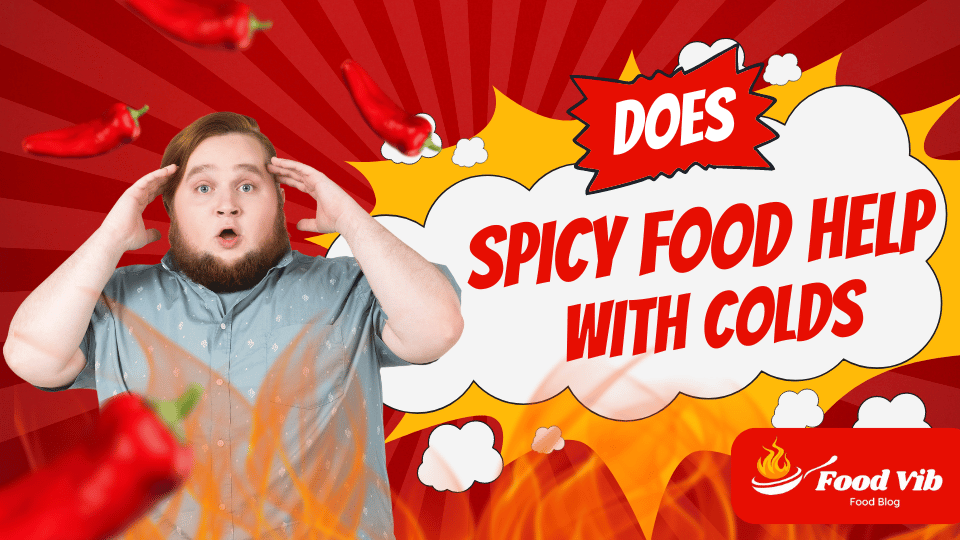Food That Makes People Sick Will Often

Foodborne disease is a frequent and major health hazard globally, typically caused by ingesting contaminated or inadequately cooked meals. The symptoms of foodborne disease, which may vary from minor pain to serious consequences, occur from swallowing hazardous bacteria, viruses, parasites, or toxins found in contaminated food.
Understanding the variables that lead to foodborne disease is critical for avoiding outbreaks and maintaining public health. By recognizing and eliminating possible sources of contamination in food production, preparation, and handling, individuals and communities may decrease the risk of foodborne disease and encourage safer eating habits.

Food That Makes People Sick Will Often
In today’s fast-paced world, when culinary variety is cherished and food is frequently a highlight of social events, it’s vital to be aware of the possible hazards lying in our meals. Foodborne infections, frequently caused by contaminated or incorrectly managed food, represent a substantial hazard to public health globally. As conscientious consumers, it’s vital to recognize which foods hold a greater risk of causing disease and how to manage these risks efficiently.
Understanding Foodborne Illnesses
Foodborne diseases, often known as food poisoning, arise when humans ingest food contaminated with hazardous bacteria, viruses, parasites, or toxins. These pollutants may infiltrate our food supply at any level, from manufacturing and processing to preparation and consumption. Common symptoms of foodborne infections include nausea, vomiting, diarrhea, stomach discomfort, fever, and in extreme instances, even death.
Identifying High-Risk Foods
Raw Meats and Poultry
Raw or undercooked meats and poultry are renowned for harboring deadly diseases including Salmonella, Escherichia coli (E. coli), and Campylobacter. These bacteria may live and reproduce in raw meat, raising the risk of foodborne disease if not cooked to the right internal temperature.
Unpasteurized Dairy Products
Unpasteurized dairy products, including milk, cheese, and yogurt, may contain hazardous bacteria such as Listeria, Brucella, and E. coli O157:H7. Pasteurization, a method of heating food to destroy hazardous bacteria, is vital for assuring the safety of dairy products.
Raw Seafood
Raw seafood, such as oysters, clams, and sushi, may host Vibrio bacteria, which flourish in marine conditions. Consumption of raw or undercooked seafood raises the risk of Vibrio infections, leading to severe gastrointestinal symptoms.
Fresh Produce
Fresh fruits and vegetables, although healthy, may also represent a danger of foodborne disease if not handled and cleaned correctly. Contaminated irrigation water, incorrect storage, and insufficient washing may introduce pathogens like Salmonella, E. coli, and norovirus to fresh vegetables.
Preventive Measures for Food Safety
Proper Food Handling and Preparation
- Cook meats, poultry, and seafood to their recommended internal temperatures to destroy dangerous germs.
- Wash hands thoroughly with soap and water before and after handling food, particularly raw meat, poultry, and eggs.
- Keep raw meats apart from ready-to-eat meals to minimize cross-contamination.
Food Storage
- Store perishable goods, including meats, dairy products, and leftovers, in the refrigerator at or below 40°F (4°C) to inhibit the development of germs.
- Use airtight containers to store leftovers and avoid bacterial infection.
Hygiene Practices
- Clean and sterilize kitchen surfaces, utensils, and cutting boards frequently to avoid the spread of germs.
- Avoid ingesting unpasteurized dairy products and raw or undercooked meats, shellfish, and eggs, particularly for sensitive groups including children, pregnant women, and those with impaired immune systems.
Safe Food Sourcing
- Purchase goods from reliable sources, such as certified farmers’ markets, supermarket shops, and suppliers with adequate food safety processes.
- Check food labels for expiry dates and evidence of damage or spoiling before buying or ingesting.
Although food is a source of sustenance and pleasure, it’s necessary to prioritize food safety to reduce the dangers of foodborne diseases. By identifying high-risk foods and taking preventative measures in food handling, preparation, storage, and procurement, we may preserve our health and well-being. Let’s aim for a food-safe atmosphere where everyone may delight in great meals without the worry of becoming unwell.
How to Properly Handle and Store Food to Prevent Illness
In today’s fast-paced world, safeguarding the safety and well-being of ourselves and our loved ones is vital. One of the key parts of sustaining good health is proper food handling and storage. Improper handling and storage of food may lead to foodborne infections, which can vary from slight discomfort to serious health consequences. Therefore, it’s vital to grasp the best procedures for handling and storing food to avoid disease.
Foodborne Illnesses
Foodborne infections, generally known as food poisoning, arise when food gets contaminated with hazardous bacteria, viruses, parasites, or toxins. These pollutants may infiltrate the food at any point, from manufacture and processing to preparation and storage. Symptoms of foodborne infections include nausea, vomiting, diarrhea, stomach discomfort, fever, and in extreme instances, organ failure and death.
Importance of Proper Food Handling
Proper food handling is vital to avoid the spread of foodborne infections. It includes a series of measures meant to limit the danger of contamination and assure the safety of the food we eat. From the moment food is bought until the time it’s eaten, each stage in the handling process plays a key role in avoiding sickness.
Purchasing Food
When buying food, it’s crucial to pick fresh, high-quality things from reliable suppliers. Inspect fruits, vegetables, meats, and dairy goods for indications of deterioration or damage. Check expiry dates and avoid acquiring things that are beyond their prime.
Transporting Food
During transit, it’s vital to maintain correct temperature control to avoid the formation of hazardous microorganisms. Use insulated coolers or thermal bags to keep perishable products cold during travel. Avoid keeping food in a hot vehicle or exposed to direct sunlight for lengthy periods.
Storing Food
Proper food storage is crucial to retaining freshness and avoiding infection. Follow these tips for keeping various sorts of food:
- Refrigeration: Perishable commodities such as meat, poultry, fish, dairy products, and prepared meals should be quickly refrigerated at or below 40°F (4°C) to slow down bacterial development.
- Freezing: Foods that won’t be used immediately may be securely kept in the freezer. Be cautious to wrap products tightly to avoid freezer burn and retain quality.
- Dry Storage: Non-perishable products like canned foods, cereals, pasta, and spices may be kept in a cool, dry spot away from sunlight and heat sources.
Handling Food Safely
Proper food handling techniques are needed during preparation and cooking to minimize cross-contamination and guarantee proper cooking. Follow these guidelines:
- Wash Hands: Always wash your hands with soap and water before and after handling food, particularly raw meat, poultry, shellfish, and eggs.
- apart: Keep raw meats apart from ready-to-eat meals to minimize cross-contamination. Use separate cutting boards, cutlery, and plates for raw and cooked meals.
- Cook Thoroughly: Cook items to the necessary internal temperatures to destroy dangerous germs. Use a food thermometer to guarantee proper cooking.
- Store Leftovers Properly: Refrigerate leftovers quickly in shallow containers to allow for speedy cooling. Consume leftovers within a few days or freeze them for extended storage.
Proper food handling and storage are key measures to avoid foodborne diseases and maintain the safety of the food we eat. By following the instructions indicated in this detailed guide, you can limit the danger of contamination and enjoy fresh, safe meals with peace of mind.
Remember, emphasizing food safety is not only crucial for your health but also for the well-being of your family and loved ones. By adopting appropriate food handling and storage techniques, you’re making proactive efforts to protect against foodborne diseases and encouraging a healthy lifestyle.
Must Read: Betty Crocker Angel Food Cake Mix
10 Types of Food That Can Cause Illness in People
In today’s fast-paced society, when convenience frequently overrides prudence, it’s crucial to be aware of the possible risks hidden in our everyday food. While food is supposed to feed and support us, some kinds of food may pose substantial threats to our health if not handled or eaten appropriately. In this detailed guide, we’ll look into the 10 categories of food that might cause disease in humans, putting light on the possible dangers and sharing suggestions on how to limit risks.
1. Raw Seafood
Raw seafood, including sushi, sashimi, and oysters, may include hazardous germs such as Vibrio, Salmonella, and Listeria. These viruses flourish in the water and may cause serious gastrointestinal disorders, including vomiting, diarrhea, and even life-threatening illnesses.
2. Undercooked Meat
Consuming undercooked or raw meat, such as beef, pig, or chicken, increases the risk of foodborne infections such as E. coli, Salmonella, and Campylobacter. Proper cooking procedures, including attaining the required internal temperatures, are vital to removing these hazardous germs.
3. Unpasteurized Dairy Products
Raw milk and unpasteurized dairy products may include hazardous germs such as E. coli, Listeria, and Campylobacter. Pasteurization, a method of boiling milk to destroy germs, is crucial for maintaining the safety of dairy products.
4. Leafy Greens
Leafy greens like lettuce, spinach, and kale have been implicated in multiple outbreaks of foodborne diseases owing to contamination with germs like E. coli and Salmonella. Thorough cleaning and careful storage may help lessen the risk of infection.
5. Shellfish
Shellfish, especially clams, mussels, and scallops, may collect toxins such as domoic acid and saxitoxin, which can cause numerous disorders, including amnesic shellfish poisoning and paralytic shellfish poisoning. It’s vital to obtain shellfish from recognized suppliers and guarantee appropriate cooking.
6. Eggs
Raw or undercooked eggs may host Salmonella bacteria, leading to serious gastrointestinal problems. Cooking eggs properly until both the whites and yolks are hard is vital for food safety.
7. Sprouts
Sprouts, such as alfalfa and bean sprouts, are prone to infection with germs including Salmonella, E. coli, and Listeria during the sprouting process. Cooking sprouts completely may help lower the risk of foodborne disease.
8. Unwashed Fruits & Vegetables
Fruits and vegetables that are not adequately cleaned before eating might retain germs, parasites, and chemical residues, providing a risk of foodborne disease. Thoroughly washing fruit under running water may help eliminate contaminants.
9. Unpasteurized Juices
Unpasteurized liquids, like apple cider and orange juice, may contain hazardous pathogens like E. coli and Salmonella. Choosing pasteurized juices and keeping them correctly helps decrease the risk of sickness.
10. Processed Foods
Processed foods, especially deli meats, pre-packaged salads, and canned items, may be sources of foodborne infections such as Listeria and Salmonella. Proper storage and handling, including refrigeration and observing expiry dates, are critical for food safety.
Conclusion
Foodborne disease remains a serious public health problem, with different kinds of foods offering a risk of contamination and sickness. By identifying the major origins of foodborne disease and following preventative actions, people may lower their risk of infection and support food safety.
Must Read: Foods That Cause Diarrhea With Metformin
FAQ (Frequently Asked Questions)
How can I prevent foodborne illness at home?
Practice appropriate food handling and storage, cook meals properly, wash fruits and vegetables, minimize cross-contamination, and pick safe food alternatives.
Which foods are most commonly associated with foodborne illness outbreaks?
Foods such as raw meat and poultry, raw eggs, raw milk, raw sprouts, and unpasteurized juices are regularly connected to foodborne disease outbreaks.
What should I do if I suspect foodborne illness?
If you suspect foodborne disease, get medical assistance, remain hydrated, and report the sickness to local health authorities if required.
How can restaurants and food service establishments prevent foodborne illness?
Restaurants and food service enterprises may adopt adequate food safety standards, educate workers in hygiene practices, and maintain clean and hygienic premises to avoid foodborne disease outbreaks.
which of the symptoms below would require you to stop working and go home?
If you encounter any of the following symptoms while at work, it's suggested to stop working and go home:
1. Persistent coughing or sneezing, particularly if accompanied by additional symptoms like fever or shortness of breath.
2. Severe headache or migraine that limits your ability to concentrate or execute duties.
3. Nausea or vomiting, especially if it continues or is severe.
4. High fever (over 100.4°F or 38°C), since this might suggest a severe disease.
5. Severe abdominal pain or discomfort.
6. Difficulty breathing or shortness of breath.
7. Profuse perspiration or clammy skin, particularly if accompanied by dizziness or weakness.
8. Sudden onset of significant weariness or weakness that limits your capacity to operate normally.
9. Chest discomfort or tightness, which might be an indication of a heat-related illness.
10. Any additional symptoms that are adversely limiting your ability to perform safely and successfully.
The food sanitation rules require someone at your restaurant?
The food sanitation standards necessitate that someone at your restaurant:
1. Maintains adequate hand hygiene by washing hands regularly and thoroughly with soap and water.
2. Ensures that all food preparation surfaces, equipment, and utensils are cleaned and sanitized routinely.
3. Monitors food temperatures to prevent the formation of hazardous germs, ensuring that hot meals are kept hot and cold foods are kept cold.
4. Practices proper food handling procedures to avoid cross-contamination between raw and cooked foods.
5. Stores food correctly to avoid spoiling and infection.
6. Follow correct techniques for freezing, preparing, chilling, and reheating food to limit the risk of contaminated disease.
7. Maintains a clean and hygienic environment in the kitchen and eating rooms, including frequent cleaning of floors, walls, and fixtures.
8. Ensures that all staff are taught in food safety protocols and understand their responsibility in maintaining sanitary requirements.
9. Keeps accurate records of food safety standards, including temperature logs and cleaning schedules.
10. Cooperates with health inspectors and follows any extra requirements or recommendations put out by local health authorities.
How food handlers can contaminate food?
Food handlers may contaminate food in numerous ways:
- Poor Personal Hygiene: Food handlers who do not wash their hands properly after using the toilet or handling raw foods might introduce hazardous germs to food.
- Cross-Contamination: This happens when germs from raw foods, especially meat and poultry, are transferred to ready-to-eat foods or food-contact surfaces. This may happen via direct touch, such as using the same cutting board or knife for raw meat and vegetables without sufficient washing in between.
- Illness or Infection: Food handlers who are unwell or have infections might unwittingly spread germs to food via touch or respiratory droplets.
- Inherent Food Handling Practices: Failure to keep food at the right temperature, insufficient cooking or reheating of food, and inappropriate chilling processes may all lead to food contamination.
- Lack of Training: Food handlers who are not adequately educated in food safety measures may accidentally contaminate food via inappropriate handling techniques.
- Unsanitary Work Environment: Environmental issues such as dirty equipment, utensils, or work surfaces may also lead to food contamination if not adequately cleaned and sterilized.
- Inadequate Pest Control: Pests such as rodents, insects, and birds may contaminate food and food processing spaces if not efficiently managed.
To avoid food contamination, food handlers need to acquire sufficient training in food safety protocols, maintain excellent personal hygiene, follow the right food handling procedures, and ensure that the work area is clean and hygienic. Regular monitoring and implementation of food safety measures are also vital in avoiding contamination and preserving public health.
What are 4 ways food can be contaminated?
Food may be contaminated in numerous ways:
- Biological Contamination: This happens when hazardous microorganisms such as bacteria, viruses, parasites, or fungi infect food. These germs may cause foodborne diseases if ingested.
- Chemical Contamination: Chemicals from cleaning agents, insecticides, food additives, or toxins created by microorganisms may contaminate food if not utilized correctly or if the food comes into touch with contaminated surfaces or packing materials.
- Physical Contamination: Foreign items such as glass, metal, plastic, hair, or jewelry may contaminate food during preparation, handling, or storage. These items may pose choking dangers or cause damage if swallowed.
- Cross-Contamination: This happens when hazardous bacteria are transmitted from one food or surface to another, generally via direct touch or contaminated utensils, cutting boards, or hands. Cross-contamination may occur between raw and ready-to-eat meals or between various raw foods, leading to the spread of germs and foodborne diseases.
The best way to keep the hands free from contamination is to?
The best strategy to keep hands free from contamination is to practice complete and regular hand hygiene. This involves:
- Hand Washing: Wash hands with soap and warm water for at least 20 seconds, being careful to clean all surfaces, including between fingers and beneath nails. Hand cleaning is necessary after using the toilet, touching raw foods, handling rubbish, or participating in any activity that may introduce pathogens to the hands.
- Use of Hand Sanitizer: When soap and water are not readily accessible, use an alcohol-based hand sanitizer with at least 60% alcohol. Ensure that the sanitizer covers all regions of the hands and massage until dry.
- Avoid Touching Face and Hair: Minimize touching the face, hair, or other areas of the body when handling food. This helps avoid the spread of germs or pollutants from the hands to the face and vice versa.
- Use of Gloves: In some instances, donning disposable gloves might offer an extra barrier against contamination. However, it's crucial to change gloves between various jobs and wash hands before putting on a new pair to prevent cross-contamination.
- Regular Hand Inspections: Encourage food workers to visually examine their hands periodically to ensure they are clean and free from cuts or sores. Open wounds or sores should be covered with waterproof bandages.
By constantly practicing excellent hand hygiene, food handlers may considerably minimize the risk of contaminating food and help to maintain a safe and hygienic food handling workplace.






One Comment